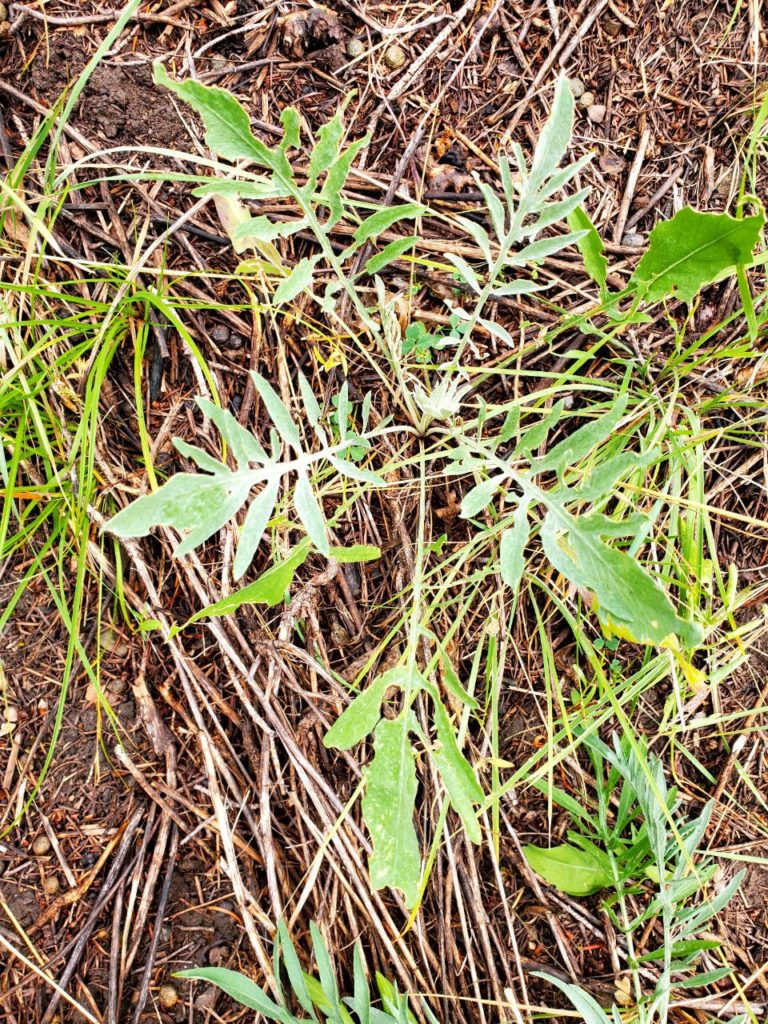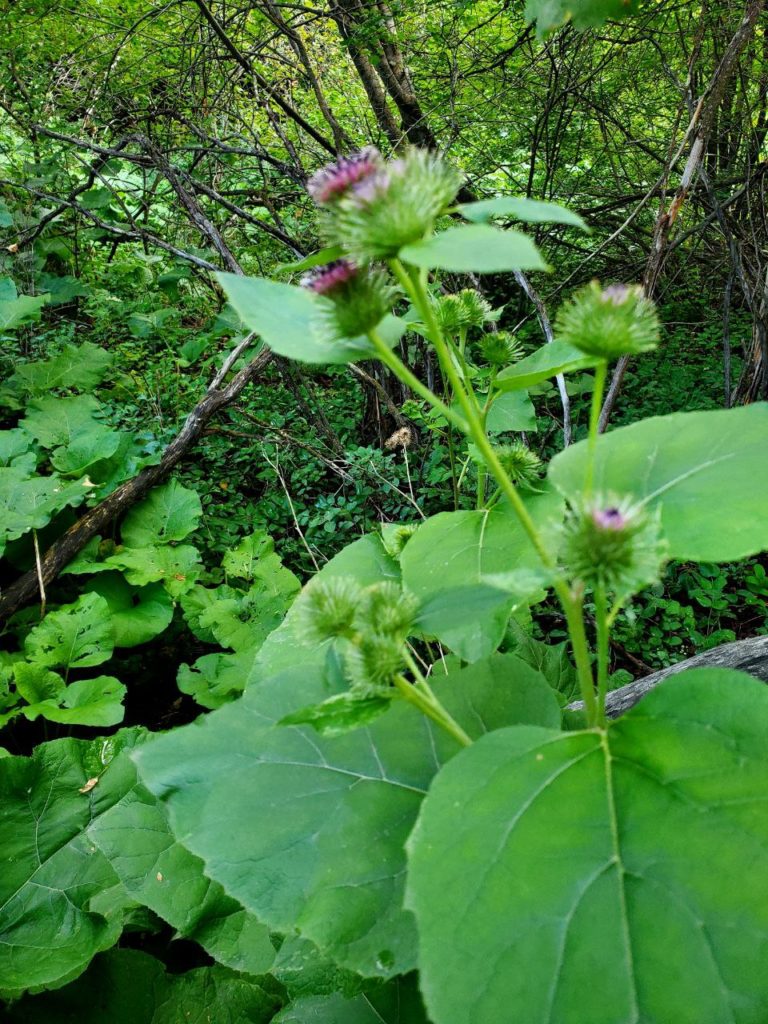Fall in Bridger Canyon brings a trifecta of purple weeds: Canada Thistle, Knapweed, and Burdock. Each is obnoxious in its own special way (see our weeds page). With all the moisture we’ve had this summer, some weeds are doing really well.
If your weeds are just now blooming, you may still have some time for control. I pulled a couple stray knapweed plants this morning – the rain makes it easy. (Wear gloves – it can be an irritant.) Tall burdock and thistle stems are an easy target for a machete, and it’s kind of fun. Morning light makes them easy to spot, and it’s cool.
However, it’s generally a bit late. As plants go dormant, a lot of chemicals lose their effectiveness. If you mow mature plants, you may just wind up shattering the seeds out and dispersing them by contaminating your equipment.
There’s still one thing you can do …
Mark your weed patches for next year. You can either mark them physically, with grade stakes and surveyor’s tape, or virtually with a phone or GPS. I like the Gaia GPS app, but there are lots of other options, including iNaturalist and Google Earth. Once you have your weeds mapped out, it’s much easier to keep an eye on problem sites, and to direct control efforts at limited areas. This can save a lot of money and time, especially if you’re outsourcing chemical spraying. Accurate targeting also prevents creation of a ‘brome desert’ by chemical destruction of all flowering plants, and a more diverse field may be more resistant to future invaders.
Canada Thistle:

Knapweed:

Next year’s knapweed rosette:

Burdock – easily identified by its giant leaves and 6′ stalks:




 Twitter
Twitter Facebook
Facebook RSS
RSS Email
Email
I have found that the knapp weed is pretty easy to pull, even with dry ground if you use a pocketknife or screwdriver and first loosen the soil around the plant before trying to pull it up.. then flick the loosened soil away and get a grip as deep as possible on the root.. there is kind of a bulb and if you can get ahold of that (usually just 3-4 inches down, max) then the rest of the root comes out easily.